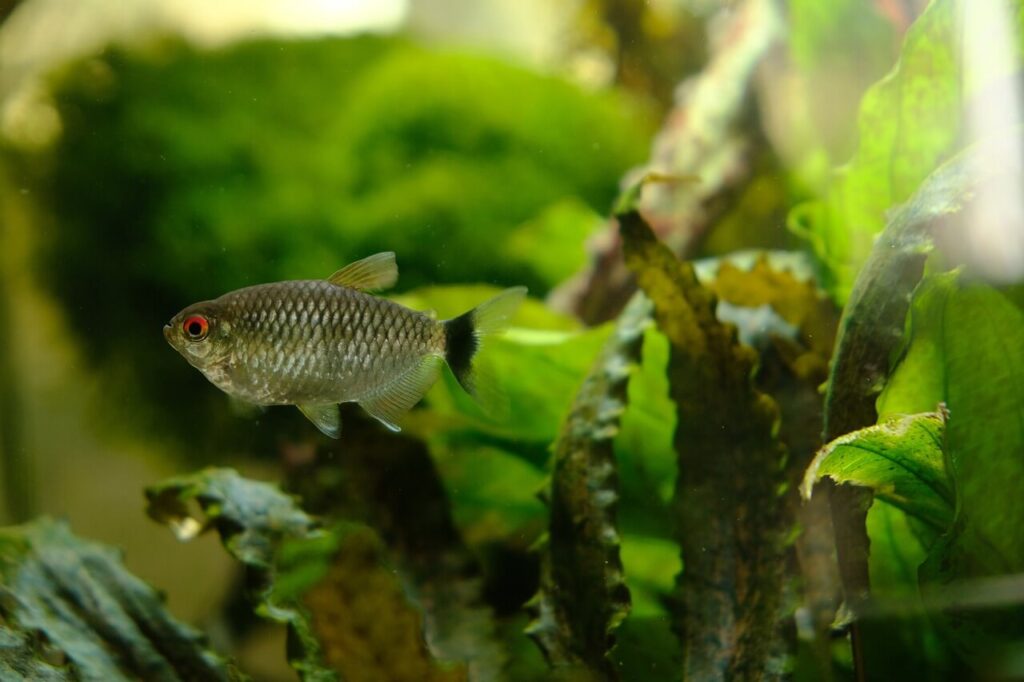Tetra fish, with their striking colors and captivating behaviors, have long been a favorite among aquarium enthusiasts. If you’re a beginner looking to explore the world of Tetra fish and are intrigued by the idea of breeding these beautiful creatures, you’ve come to the right place. This comprehensive guide will walk you through the fascinating world of Tetra breeding, providing step-by-step techniques, insights into their breeding behavior, and tips for creating the perfect environment for successful breeding. Whether you’re interested in neon Tetras, glow Tetras or any other Tetra species, this guide will equip you with the knowledge and skills needed to embark on a rewarding journey of Tetra fish breeding in your own aquarium.
Tetra Breeding Techniques
Breeding Tetra fish can be a rewarding and fascinating endeavor for aquarium enthusiasts. This guide outlines the essential techniques and steps for successfully breeding Tetra fish in your aquarium.
Understanding Tetra Breeding Behavior
Before delving into the breeding process, it’s crucial to familiarize yourself with Tetra breeding behavior:
- How Often Do Tetras Breed? Tetras have the potential to breed year-round, given the right conditions. However, they are more likely to spawn during the rainy season in their natural habitat. In an aquarium setting, they may breed when conditions are optimal.
- Glow Tetra Fish Breeding Glow Tetras, also known as GloFish Tetras, are a genetically modified variant of Tetras. They exhibit similar breeding behaviors to their non-modified counterparts but possess the added appeal of fluorescent colors under certain lighting conditions.
- Neon Tetra Breeding Behavior Neon Tetras are one of the most popular Tetra species in the aquarium hobby. When they are ready to breed, their colors become more vivid, and they exhibit distinctive behaviors, such as darting and chasing.
- Will Neon Tetras Breed in a Community Tank? Neon Tetras can breed in a community tank, but it’s essential to create the right conditions for successful breeding. Providing hiding spots and suitable water parameters can encourage breeding behavior.
Best Tetra Breeding Techniques for Beginners
Now that you understand Tetra breeding behavior, let’s explore the step-by-step process of breeding Tetras:
Tank Setup for Breeding
Start by setting up a separate breeding tank. It should be smaller than your main aquarium and equipped with a sponge filter, a heater, and gentle lighting. Maintain stable water parameters, including temperature (around 78°F or 26°C), pH (around 6.5), and soft water.
Selecting Breeding Pairs
Choose healthy adult Tetras for breeding. Neon Tetras and other popular species can be bred, but ensure you have both males and females in the breeding tank. Look for signs of readiness, such as bright colors and increased activity.
Conditioning the Tetras
Prior to breeding, feed your Tetras a high-quality diet of live or frozen foods, such as brine shrimp or daphnia. This will help improve their overall health and readiness to spawn.
Creating a Breeding Environment
Introduce fine-leaved plants like Java moss or spawning mops to the breeding tank. These plants provide hiding spots for the Tetra eggs and fry. You can also add a mesh or breeding net to protect the eggs from being eaten by the adults.
Inducing Spawning
Raise the temperature slightly (to around 80°F or 27°C) and increase the lighting period gradually to mimic the dawn and dusk conditions. This can stimulate Tetras to spawn. Ensure that the water is soft and slightly acidic.
Spawning and Egg Collection
When breeding conditions are optimal, the female Tetra will release her eggs, and the male will fertilize them. Eggs are adhesive and may attach to plants or other surfaces. To collect the eggs, you can gently scoop them up with a clean, soft net or place a spawning mop with eggs in a separate container.
Incubating and Caring for Fry
Transfer the eggs to a separate rearing tank with similar water conditions. Use an air-powered sponge filter to maintain water quality. The eggs will hatch in a few days, and the fry will initially feed on their yolk sacs. Afterward, offer them infusoria or powdered fry food until they are large enough to eat baby brine shrimp.
Maintaining Water Quality
Regularly monitor and maintain water quality in the breeding and rearing tanks. Perform partial water changes to ensure stable conditions for the developing fry.
1. Tank Preparation
- Breeding Tank: Set up a separate breeding tank. It should be smaller than your main aquarium, ideally 10 to 20 gallons, and well-equipped with a heater, filter, and gentle water flow.
- Water Parameters: Maintain stable water conditions with a temperature between 75°F to 80°F (24°C to 27°C) and a neutral pH level around 7. Tetras are sensitive to fluctuations, so water quality is crucial.
- Substrate and Plants: Use fine gravel or a spawning mop as a substrate. Live or artificial plants provide hiding spots for fry and encourage spawning behavior.
2. Selecting Breeding Pairs
- Age and Health: Choose healthy adult Tetras that are at least one year old. Ensure they are free from diseases or infections.
- Species Compatibility: Tetras within the same species usually breed more readily. Some Tetra species may not crossbreed successfully.
- Sexing: Learn to differentiate between male and female Tetras. Males are often more colorful and have certain distinguishing features depending on the species.
3. Conditioning the Breeders
- Diet: Feed the selected breeding pair high-quality live or frozen foods like daphnia, brine shrimp, and bloodworms to improve their overall health and readiness to spawn.
- Separation: Isolate the chosen pair in the breeding tank for a few weeks to ensure they are in prime breeding condition.
4. Inducing Spawning
- Dawn and Dusk Lighting: Use a dimmer light or simulate dawn and dusk lighting to mimic natural conditions when Tetras are more likely to spawn.
- Increase Temperature: Slightly raise the water temperature by a couple of degrees to stimulate breeding behavior.
- Simulated Rain: Occasionally, conduct partial water changes with cooler water to simulate a rainstorm. This can trigger spawning.
5. Spawning Behavior
- Egg Scattering: Tetras are egg scatterers, meaning they release eggs randomly in the tank. Ensure plenty of hiding places among plants to protect the eggs from being eaten by the adults.
- Egg Collection: If you want to maximize fry survival, consider placing a spawning mop or mesh over the substrate to collect eggs as they fall. Transfer these eggs to a separate rearing tank.
6. Rearing Fry
- Separate Rearing Tank: Move the collected eggs or fry to a dedicated rearing tank to protect them from being eaten by adult Tetras.
- Feeding Fry: Initially, feed the fry with infusoria or commercial fry food. As they grow, transition to finely crushed flakes and brine shrimp.
- Water Quality: Maintain pristine water conditions in the rearing tank, with regular water changes to ensure optimal growth.
7. Gradual Introduction
- Introduce to Main Tank: Once the fry are large enough to avoid being eaten by adult Tetras, you can gradually introduce them to the main tank.
8. Patience and Observation
- Monitor Behavior: Keep a close eye on the behavior of the breeding pair, eggs, and fry. Make adjustments as needed to ensure the best chance of survival.
- Multiple Attempts: Successful breeding may not occur on the first attempt. Tetras may require multiple tries before achieving success.
Conclusion
Breeding Tetra fish is both an art and a science, and as a beginner, you’ve now gained valuable insights into this captivating aspect of aquarium keeping. Throughout this guide, we’ve explored Tetra breeding techniques, understood their unique breeding behaviors, and learned how to create the ideal environment for successful breeding. Whether you’re fascinated by the vibrant colors of neon Tetras, the ethereal glow of glow Tetras, or any other Tetra species, you now possess the tools and knowledge to embark on this exciting journey.
Remember that Tetra breeding requires patience, attention to detail, and a deep appreciation for these remarkable fish. As you nurture and witness the growth of Tetra fry in your aquarium, you’ll not only gain a deeper understanding of their life cycle but also experience the joy of contributing to the conservation of these remarkable aquatic creatures.
Ultimately, Tetra breeding is a rewarding endeavor that allows you to connect with the natural world from the comfort of your home. Whether you’re motivated by the desire to preserve these species or simply want to witness the magic of life unfolding in your aquarium, breeding Tetras offers a unique and enriching experience for beginners and seasoned aquarists alike. So, dive into the world of Tetra breeding with confidence, and may your aquarium be filled with the beauty and wonder of these magnificent fish.











